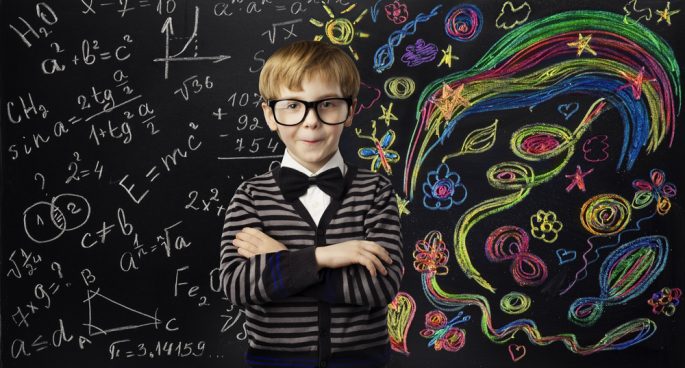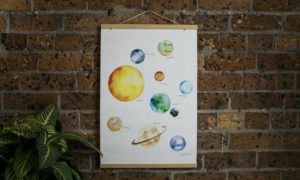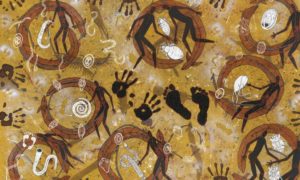Visualising Science: Watch Art and Science Collide

Get your hands busy with scissors and glue, create paintings inspired by science, listen to music produced by technology, and stand among magnificent artworks. Science has influenced many different forms of art, and art has proved an effective way to communicate and teach scientific concepts. See science and art collide this Science Week and take part in the creativity.
The Mornington Peninsula Astronomical Society will host an Astrophotography Workshop, with an array of lectures given by experienced and acknowledged astrophotographers during the day, and practical hands-on sessions at night in the Briars Observatory, Mount Martha. Topics covered include an introduction to wide field astrophotography, time-lapse photography, aurora photography, deep sky imaging, and image processing using MPAS’ premium equipment. For those confident in their existing skills, MPAS invites submissions from primary and secondary school students to a space photo competition. Continuing the astronomy theme, the Windsor Workshop is teaching a science lesson with a twist: Watercolour Solar System. Artists, Sarah Hankinson and Kate Rijs will explore a series of techniques designed specifically to replicate the planets in our solar system. Alongside this creative duo, Dr Jasmina Lazendic-Galloway, lecturer in the School of Physics and Astronomy (Monash University), and creator of the popular massive open online course “How to Survive on Mars” will teach painters about the planets of our solar system. Join the workshop to paint a watercolour solar system poster complete with custom-made wooden hanging rails.

Exhibitions where science and art collide will be on display around Victoria during National Science Week. The Mornington Peninsula Astronomical Society and PrimeSCI are holding at exhibition at the Coolart Homestead, Adventures Under Southern Skies, featuring sky phenomena and astronomy photography from the Mornington Peninsula and surrounding areas. Geelong Gallery is also hosting a Game Changers and Change Makers collection of works. As part of their collection, the gallery is exploring the mathematics of the hexagon shape – one of the few shapes that can form a tessellating pattern (be placed together without gaps), making it useful to produce strong structures. Help the gallery create its own “beehive” using hexagons, wool, and pegs as you wander through the exhibit.
The New and Experimental Arts Lab (NEAL) is presenting a showcase event investigating the Intersection of Science and Experimental Art at the Waurn Ponds Library, Geelong. In a musical performance combined with workshop, both science and art technology will explore acoustic ecology from the African Continent with Vicki Hallett, sound artist, composer and musician at the Australian Music Centre; different technology platforms to code and create music electronically with Jem Savage, musician, producer and sound engineer; and a comedic look at neuroscience with biomedical researcher and science communicator Dr David Farmer. You can also engage with developing technologies by learning how to create models at a 3D Print and Design Workshop at Realm Library. There you’ll have the chance to design whatever your imagination fancies and have it printed to take home.

The Art Gallery of Ballarat, Federation University, and the Australian Society for Parasitology are exploring parasites and their interactions with the human body all week long. The Art Gallery is displaying Gula Guri mayin (Heal the Body), by indigenous artist Bernard Lee Singleton with animation by Russell Milledge and Tai Inoue. This project centred on the Gula Guri mayin painting explores the themes of parasites and health. To extend the exhibit further, they are running hands-on science and art activities during Parasites on Parade Family Fundays. There will be many activities for everyone including a virtual reality experience, parasite face painting, creating parasite masks, Nelly and Ned the Nematodes story writing, Scoop the Poop class, making a Giant Tape Worm, and visits to the Parasite Lab. For those seeking scientific discussion, the Café Scientifique initiative has invited professional scientists to share their stories. Federation University researchers Clare Anstead and David Piedraftita will discuss how parasites affect our lives, and Drew Berry from the Walter and Eliza Hall Institute will discuss science animations and the importance of artists in science communication at The Art of Parasites – Painting a New Image. This can be washed down with Pets, Pots, Pints and Parasites, a public lecture on parasites in human and animal health, vaccination and drug development against parasites, and beer brewing.
Science is taking on many art forms during National Science Week: from music to painting, photography to 3D printing design, ignite your imagination with the many activities on offer, and perhaps learn something along the way.
